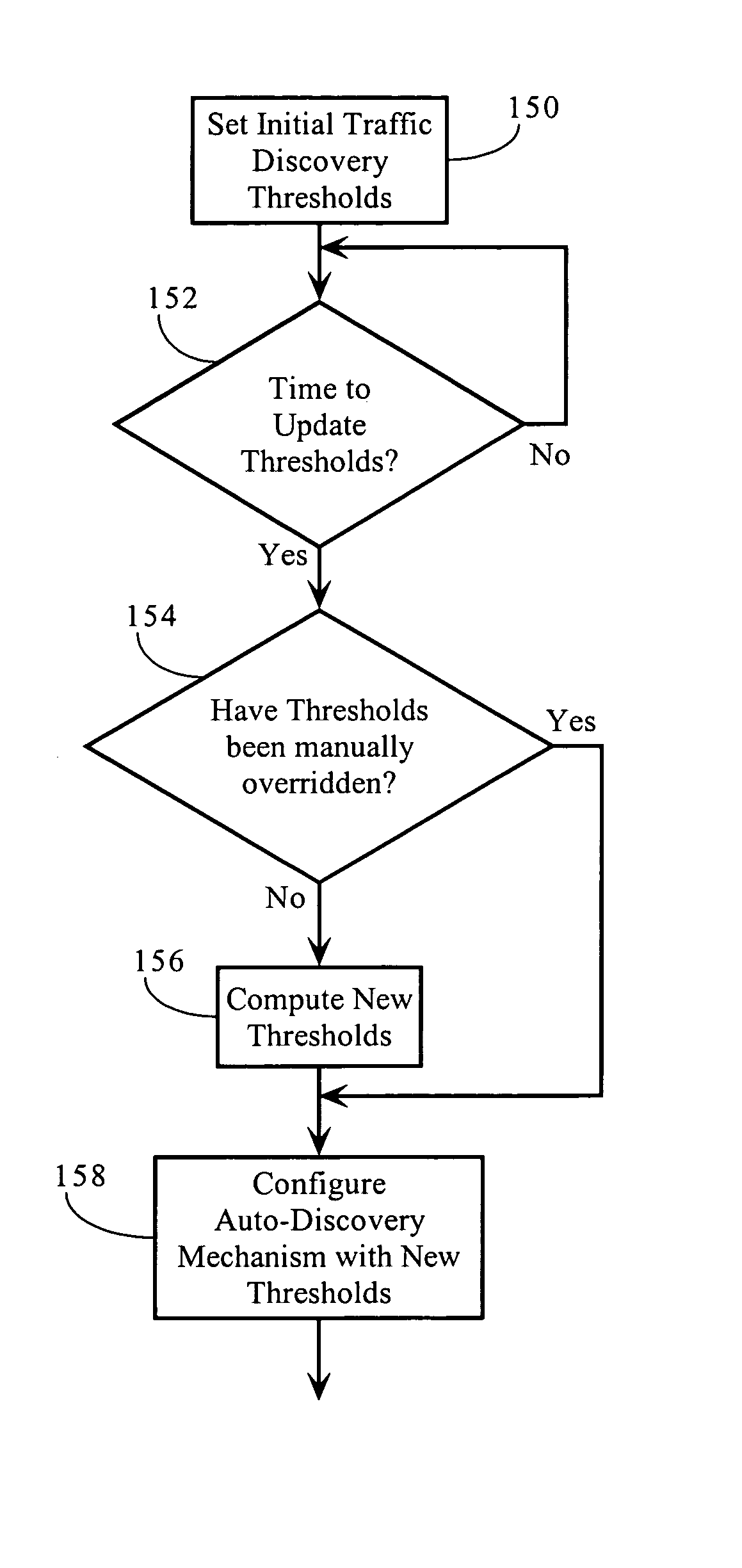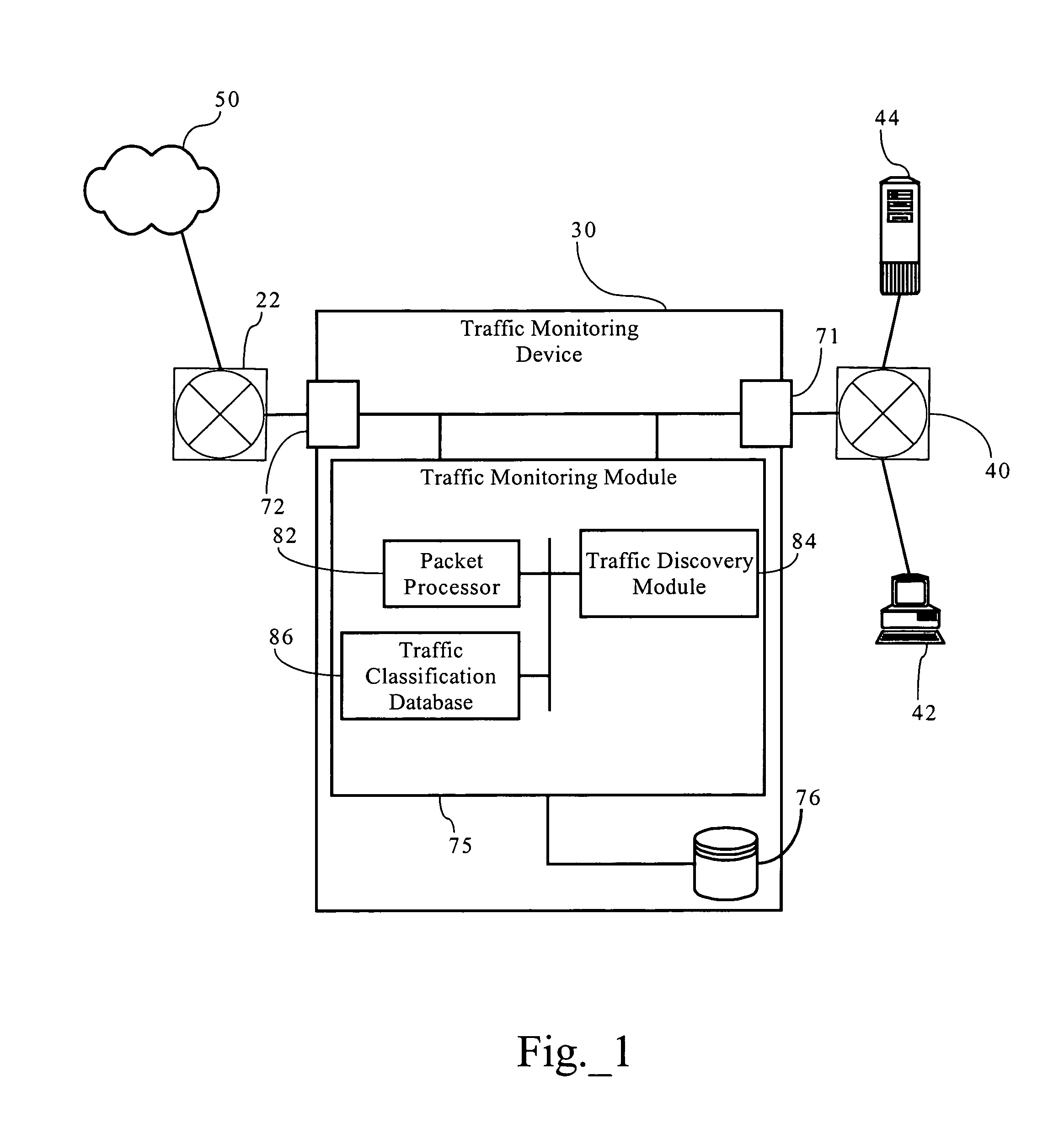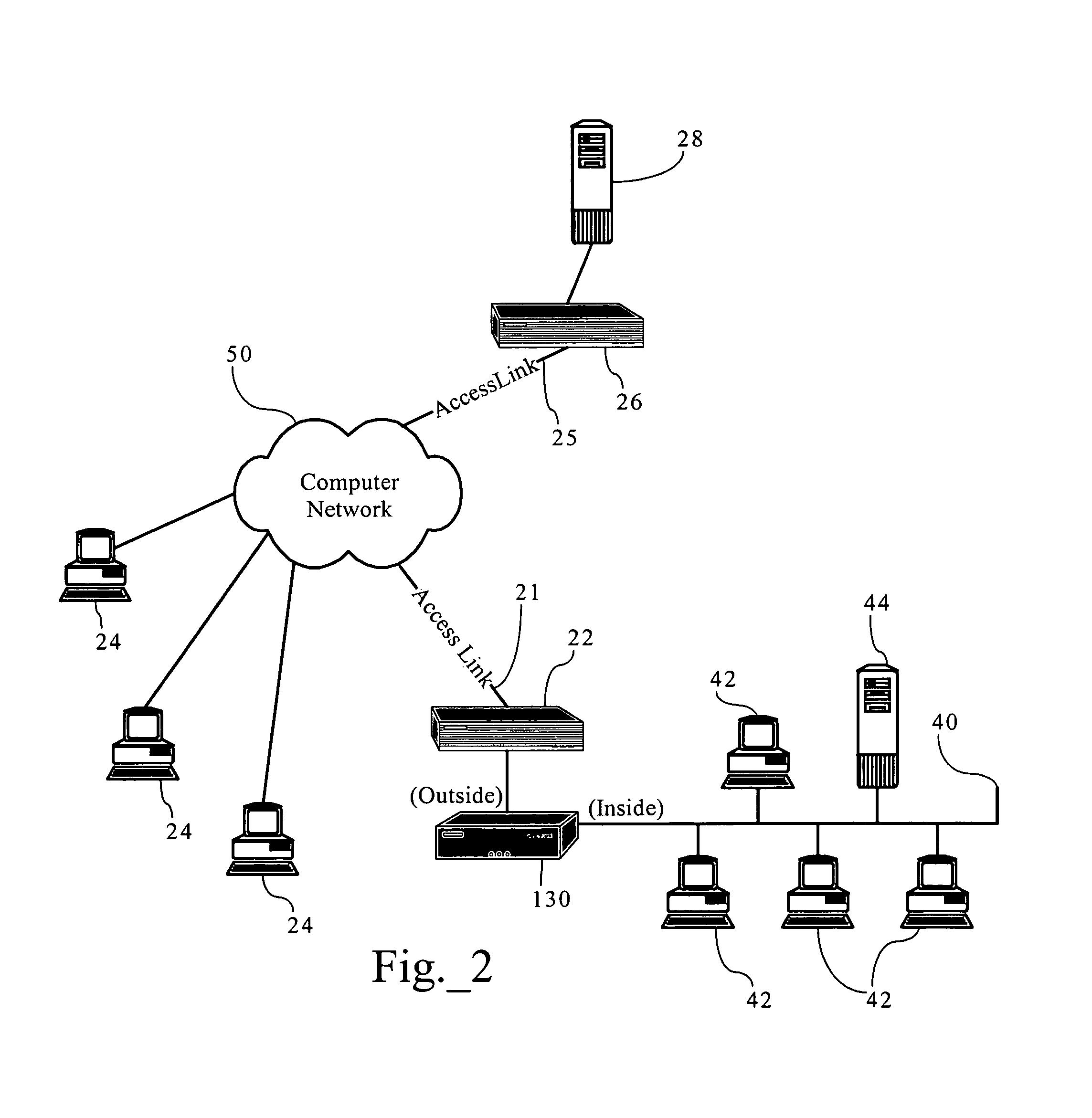Automatic network traffic discovery and classification mechanism including dynamic discovery thresholds
a network traffic and automatic technology, applied in the field of digital packet data network management, can solve problems such as affecting data transfer speed,
- Summary
- Abstract
- Description
- Claims
- Application Information
AI Technical Summary
Benefits of technology
Problems solved by technology
Method used
Image
Examples
Embodiment Construction
)
[0042]FIG. 1 illustrates a basic network environment in which an embodiment of the present invention operates. FIG. 1 shows a first network device 40 (such as a hub, switch, router, and / or a variety of combinations of such devices) interconnecting two end-systems (here, client computer 42 and server 44). FIG. 1 also provides a second network device 22, such as a router, operably connected to network cloud 50, which in one implementation could be an open, wide-area network. As FIG. 1 shows, traffic monitoring device 30 comprises traffic monitoring module 75, and first and second network interfaces 71, 72, which operably connect traffic monitoring device 30 to the communications path between first network device 40 and second network device 22. Traffic monitoring module 75 generally refers to the functionality implemented by traffic monitoring device 30. In one embodiment, traffic monitoring module 75 is a combination of hardware and software, such as a central processing unit, memor...
PUM
 Login to View More
Login to View More Abstract
Description
Claims
Application Information
 Login to View More
Login to View More - R&D
- Intellectual Property
- Life Sciences
- Materials
- Tech Scout
- Unparalleled Data Quality
- Higher Quality Content
- 60% Fewer Hallucinations
Browse by: Latest US Patents, China's latest patents, Technical Efficacy Thesaurus, Application Domain, Technology Topic, Popular Technical Reports.
© 2025 PatSnap. All rights reserved.Legal|Privacy policy|Modern Slavery Act Transparency Statement|Sitemap|About US| Contact US: help@patsnap.com



